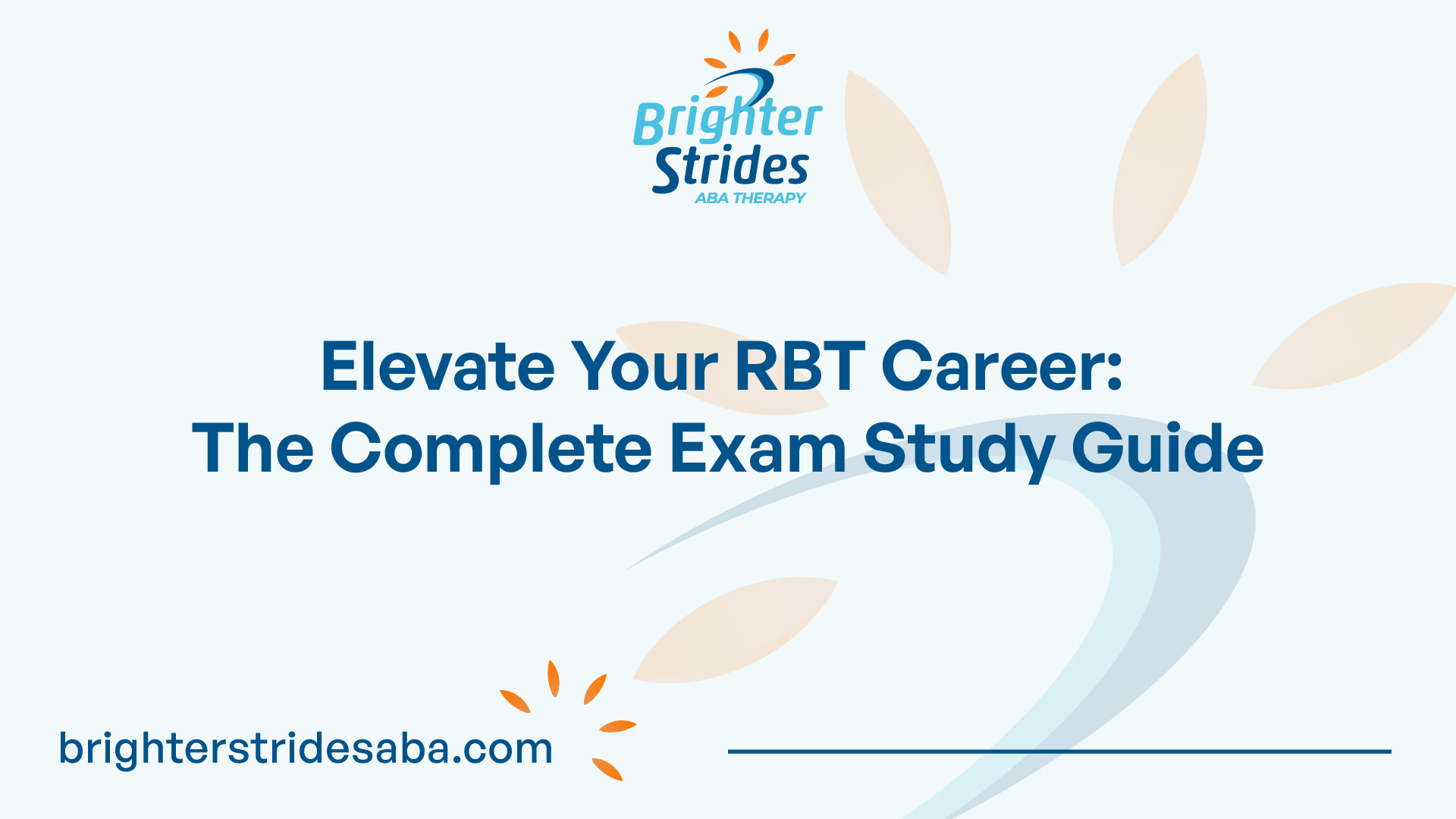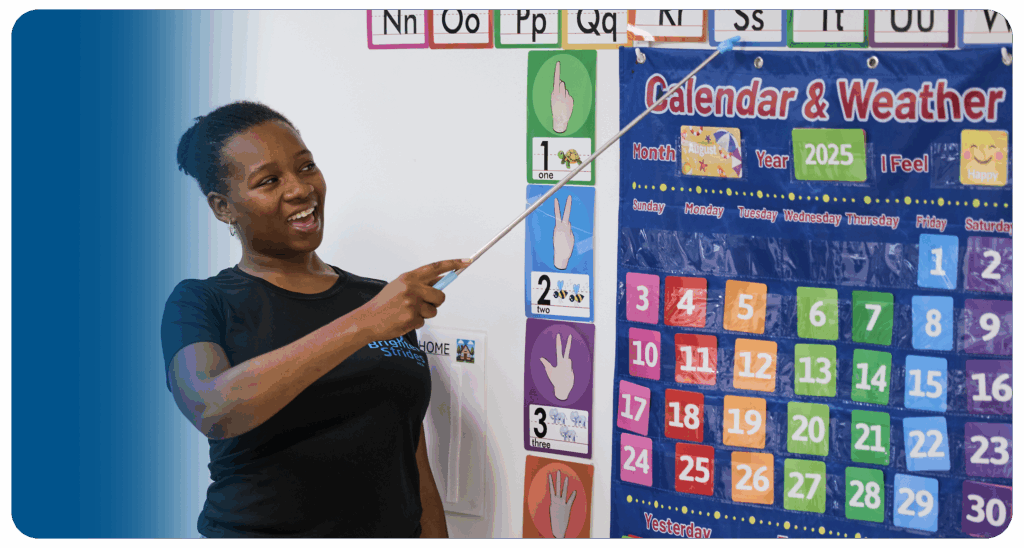RBT Exam Study Guide
Preparing for the Registered Behavior Technician (RBT) Exam requires a comprehensive study plan and a solid understanding of the exam structure. This study guide will provide an overview of the RBT exam and help you navigate the RBT Task List effectively.

Overview of the RBT Exam
The RBT exam consists of 75 multiple-choice questions that must be answered within 90 minutes.
The questions are divided into three sections:
- Measurement
- Assessment
- Intervention
Each section covers specific domains related to behavior analysis. To pass the exam, a minimum score of 80% is required.
Understanding the RBT Task List
The RBT Task List serves as the foundation for the RBT exam. It is a comprehensive list of the skills and knowledge that RBTs are expected to possess. The Task List can be downloaded from the Behavior Analyst Certification Board (BACB) website. To succeed in the exam, it is essential to study and understand each item on the Task List.
To give you an overview of the areas covered in the RBT Task List, here are the key domains:
- Behavior Measurement and Assessment: This domain focuses on the principles and procedures of measuring behavior, conducting assessments, and analyzing data. It includes topics such as data collection methods, graphing, and behavior assessment techniques.
- Skill Acquisition and Behavior Reduction: This domain covers strategies for teaching new skills and reducing problem behaviors. It encompasses topics like reinforcement, prompting, shaping, and behavior reduction techniques.
- Documentation and Reporting: This domain emphasizes the importance of accurate and thorough documentation in behavior analysis. It includes topics such as writing behavior plans, progress notes, and maintaining confidentiality.
- Professional Conduct and Scope of Practice: This domain highlights the ethical considerations and professional responsibilities of RBTs. It covers topics such as maintaining client dignity, professional boundaries, and adhering to ethical guidelines.
Studying the RBT Task List thoroughly and understanding the concepts within each domain is crucial for success in the exam. It is recommended to create a study plan, organize study materials, and allocate sufficient time to review and practice exam-style questions.
By familiarizing yourself with the RBT exam structure and the content covered in the RBT Task List, you can effectively prepare for the exam and increase your chances of passing. Use this study guide as a starting point to develop a comprehensive study plan that suits your learning style and needs.
Preparing for the RBT Exam
To ensure success on the RBT exam, thorough preparation is essential. This section will guide you through recommended study materials, effective study strategies, and the utilization of flashcards for review.
Recommended Study Materials
When preparing for the RBT exam, it’s important to utilize a variety of study materials to cover all the necessary content. Some recommended study materials include textbooks, online courses, practice exams, study groups, and study partners. By using a combination of these resources, you can gain a comprehensive understanding of the RBT Task List, which is the foundation of the exam.
The RBT Task List, a list of the skills and knowledge that RBTs are expected to have, should be thoroughly studied and understood. Each item on the Task List should be reviewed and mastered to ensure confidence in answering related questions during the exam.
Effective Study Strategies
To make the most of your study time, it is recommended to create a study schedule. Organize your study sessions into short, focused blocks of time rather than long, marathon sessions. This approach helps with information retention and prevents burnout.
Additionally, practicing with multiple-choice questions is crucial for exam preparation. Seek out practice exams online or in study materials to familiarize yourself with the exam format and build confidence. Time yourself during these practice sessions to simulate test conditions and improve your speed in answering questions.
Utilizing Flashcards for Review
Flashcards are a powerful tool for memorizing key concepts, definitions, and terms for the RBT exam. Create flashcards that cover important topics from the RBT Task List. On one side of the flashcard, write a question or term, and on the other side, write the corresponding answer or definition.
Regularly review these flashcards to reinforce your understanding of the material. Set aside dedicated study sessions for flashcard review, and aim to gradually increase the number of flashcards you can confidently answer. Flashcards are particularly effective for quick review sessions, allowing you to test your knowledge anytime and anywhere.
By following recommended study materials, implementing effective study strategies, and utilizing flashcards for review, you can enhance your preparedness for the RBT exam. Remember to focus on areas that require additional attention and maintain a consistent study schedule to maximize your chances of success.
Exam Details and Retake Policy
As you embark on your journey to become a Registered Behavior Technician (RBT), it’s essential to familiarize yourself with the exam details and the retake policy. Understanding these aspects will help you prepare effectively and approach the exam with confidence.
Exam Format and Scoring
The RBT exam is a computer-based exam that consists of 75 multiple-choice questions. These questions are designed to assess your knowledge and understanding of the skills outlined in the RBT Task List. The exam must be completed within 90 minutes.
The RBT exam questions are divided into three sections: measurement, assessment, and intervention. These sections cover various topics related to behavior measurement, assessment techniques, and intervention strategies. It is important to thoroughly study and review all areas of the RBT Task List to ensure comprehensive preparation.
To pass the RBT exam, you must achieve a minimum score of 80%. The scoring is based on the number of correct answers out of the 75 questions. It is crucial to read each question carefully, consider all options, and select the most appropriate response to maximize your chances of success.
Retaking the RBT Exam
If you do not pass the RBT exam on your first attempt, don’t be discouraged. You have the opportunity to retake the exam up to three times within a year. However, it is important to note that if you fail the exam three times within a year, you will need to wait for one year before attempting it again.
To increase your chances of passing the RBT exam, it is crucial to thoroughly prepare and study the recommended materials. Identify areas where you may need additional focus and review, and utilize effective study strategies to reinforce your understanding of the material.
Allowing ample time between retakes can also be beneficial. Use this time to review your performance, identify areas of improvement, and refine your study approach. Taking the time to adequately prepare and addressing any knowledge gaps will enhance your readiness for subsequent attempts.
Remember, the RBT exam is an opportunity to demonstrate your knowledge and dedication to providing quality behavior analysis services. With careful preparation, effective study strategies, and a positive mindset, you can successfully pass the RBT exam and take the next step in your career as a Registered Behavior Technician.
Key Areas to Focus on for the RBT Exam
To successfully pass the RBT (Registered Behavior Technician) exam, it is essential to focus on key areas that are covered in the exam. The RBT exam is designed to assess the knowledge and skills of individuals seeking to become Registered Behavior Technicians. It consists of multiple-choice questions that cover various domains outlined in the RBT Task List. The key areas to focus on include behavior measurement and assessment, skill acquisition and behavior reduction, documentation and reporting, and professional conduct and scope of practice.
Behavior Measurement and Assessment
Behavior measurement and assessment are fundamental aspects of the RBT role. It involves understanding and implementing various techniques to collect accurate data on behavior. This includes the use of measurement systems, data recording methods, and graphing techniques. It is important to have a solid understanding of behavior measurement concepts, such as frequency, duration, latency, and intensity. Familiarity with functional assessment procedures and the ability to identify appropriate assessment tools for different scenarios is also crucial.
Skill Acquisition and Behavior Reduction
As an RBT, you will be responsible for assisting in skill acquisition and behavior reduction programs. This involves implementing behavior change procedures under the supervision of a Board Certified Behavior Analyst (BCBA) or Board Certified Assistant Behavior Analyst (BCaBA). It is important to understand the principles of applied behavior analysis (ABA) and how to effectively teach new skills and reduce problem behaviors. This includes knowledge of reinforcement strategies, prompting and fading techniques, and strategies for addressing challenging behaviors.
Documentation and Reporting
Accurate and detailed documentation is vital in the field of behavior analysis. RBTs are expected to maintain thorough records of client progress, behavior data, and interventions. Understanding how to write clear and objective session notes, behavior plans, and progress reports is essential. It is important to be familiar with the required documentation formats, including the use of objective language and the inclusion of relevant data.
Professional Conduct and Scope of Practice
RBTs are expected to adhere to ethical standards and maintain professional conduct in their practice. Understanding the ethical guidelines outlined by the Behavior Analyst Certification Board (BACB) is crucial. This includes maintaining client confidentiality, obtaining appropriate consent, and ensuring professional boundaries. It is important to understand the limitations of the RBT role and when to seek supervision or consult with a BCBA.
By focusing on these key areas, you will be better prepared for the RBT exam. It is important to thoroughly review the RBT Task List provided by the Behavior Analyst Certification Board (BACB) and utilize study materials and practice questions to reinforce your understanding. Remember to allocate sufficient time for studying and employ effective study strategies to maximize your preparation efforts.
Additional Resources for RBT Exam Preparation
To maximize your chances of success on the RBT exam, it’s important to utilize additional resources that can aid in your preparation. These resources can provide valuable study materials and tips for test-taking success.
Study Guides and Practice Questions
A comprehensive study guide can be an invaluable resource when preparing for the RBT exam. It covers all the content areas outlined in the RBT Exam Task List, including behavior measurement and assessment, skill acquisition and behavior reduction, documentation and reporting, and professional conduct and scope of practice. The study guide provides thorough explanations and examples to help you understand and master the material.
Additionally, practice questions are often included in study guides, allowing you to assess your knowledge and identify any areas that may require further review. By practicing with these questions, you can familiarize yourself with the exam format and gain confidence in your ability to answer questions accurately.
When selecting a study guide, ensure that it aligns with the most recent version of the RBT Task List. This will ensure that the content covered is up to date and relevant to the exam.
Tips for Test-Taking Success
In addition to study materials, it’s important to develop effective strategies for test-taking success. The RBT exam can be challenging, but with proper preparation and test-taking techniques, you can increase your chances of achieving a favorable outcome.
Some general tips for test-taking success include:
- Create a Study Schedule: Plan your study sessions in advance and allocate sufficient time to cover all the necessary material. Breaking down your study sessions into smaller, manageable chunks can help prevent overwhelm and improve retention.
- Use a Variety of Study Materials: Utilize a combination of textbooks, online courses, practice exams, study groups, and study partners. This multi-faceted approach can provide different perspectives and reinforce your understanding of the content.
- Focus on Areas that Require the Most Help: Identify your strengths and weaknesses based on the RBT Task List. Allocate more study time to areas that you find challenging and seek additional resources or guidance to improve your understanding.
- Take Care of Yourself: Prioritize self-care during your exam preparation. Get enough sleep, eat well, and engage in activities that help you relax and reduce stress. Taking care of your physical and mental well-being can enhance your cognitive abilities.
By incorporating these additional resources and implementing effective study strategies, you can enhance your preparation for the RBT exam. Remember to remain focused, confident, and diligent in your studies, and you’ll be well on your way to achieving your goal of becoming a Registered Behavior Technician.
Benefits of Passing the RBT Exam
Passing the RBT (Registered Behavior Technician) exam not only signifies an individual’s understanding and application of the principles and practices of behavior analysis but also opens up a range of benefits and opportunities. Let’s explore two key advantages of successfully completing the RBT exam.
Career Opportunities and Advancement
Obtaining RBT certification enhances job prospects and creates opportunities for career advancement in the field of behavior analysis. With the increasing demand for qualified RBTs, individuals who have successfully passed the exam are well-positioned to pursue rewarding careers in settings such as schools, clinics, and residential facilities.
RBTs play a vital role in a multidisciplinary team, working alongside Board Certified Behavior Analysts (BCBAs) and other professionals to deliver effective Applied Behavior Analysis (ABA) therapy. By passing the RBT exam, individuals demonstrate their competence and commitment to providing high-quality care to individuals with behavioral challenges.
Increased Credibility and Trust
Passing the RBT exam is a significant milestone towards becoming a certified and qualified RBT, which in turn increases credibility and trust among employers, colleagues, and clients. Employers value the RBT certification as it ensures that individuals possess the necessary skills and knowledge to work effectively in the field of behavior analysis.
Clients and their families also place trust in RBTs who have successfully completed the exam. This certification serves as evidence of an individual’s dedication to providing evidence-based behavior intervention strategies and maintaining ethical standards in their practice.
By passing the RBT exam, individuals establish themselves as competent professionals in the field, gaining the trust and confidence of both employers and clients. This can lead to opportunities for professional growth, increased responsibilities, and even potential leadership roles.
Successfully passing the RBT exam is not only a significant milestone in an individual’s career but also a testament to their commitment to providing quality care and adhering to ethical standards. The benefits of passing the RBT exam extend beyond personal satisfaction, opening doors to exciting career opportunities and enhancing credibility and trust among peers and clients.
Key Areas to Focus on for the RBT Exam
To pass the RBT exam and become a certified Registered Behavior Technician, it is important to focus on key areas of knowledge and skills outlined in the RBT Task List. The RBT exam covers various domains that are essential for understanding the principles and practices of applied behavior analysis. The key areas to focus on include behavior measurement and assessment, skill acquisition and behavior reduction, documentation and reporting, and professional conduct and scope of practice.
Behavior Measurement and Assessment
Behavior measurement and assessment are fundamental aspects of being an RBT. This domain focuses on understanding various methods of collecting and analyzing data to measure behavior. It also covers the importance of conducting functional assessments and using assessment tools to identify the function of behavior.
Skill Acquisition and Behavior Reduction
Skill acquisition and behavior reduction involve implementing behavior change procedures and strategies to teach new skills and reduce problem behaviors. This domain includes knowledge of reinforcement, prompting, shaping, and other behavior change techniques. Understanding how to effectively design and implement behavior intervention plans is crucial for success in this area.
Documentation and Reporting
Documenting and reporting are essential responsibilities of an RBT. This domain covers the importance of maintaining accurate and detailed records of client progress, including data collection, session notes, and progress reports. It also includes knowledge of confidentiality and privacy regulations.
Professional Conduct and Scope of Practice
Professional Conduct and adhering to the scope of practice are crucial for maintaining professionalism and ethical standards as an RBT. This domain covers topics such as maintaining client dignity and privacy, establishing professional boundaries, and understanding the limits of one’s role as an RBT. It also includes knowledge of the ethical guidelines set forth by the Behavior Analyst Certification Board (BACB).
By focusing on these key areas and thoroughly studying the relevant content, individuals can enhance their understanding and proficiency in the field of applied behavior analysis. It is recommended to utilize a variety of study materials, such as textbooks, online courses, and practice exams, to ensure comprehensive preparation for the RBT exam. By dedicating time and effort to studying these areas, individuals increase their chances of passing the exam and becoming a certified RBT.
Conclusion
In conclusion, becoming a Registered Behavior Technician requires dedication, hard work, and a commitment to providing high-quality care to individuals with behavioral challenges. By focusing on the key areas outlined in the RBT Task List and utilizing additional study materials and test-taking strategies, individuals can enhance their chances of passing the exam and pursuing rewarding careers in the field of behavior analysis.
It is important to remember that passing the RBT exam is just the beginning of a lifelong learning journey. As an RBT, individuals will continue to expand their knowledge and skills through ongoing training and supervision provided by Board Certified Behavior Analysts (BCBAs). This ongoing professional development is essential for maintaining competence and staying up-to-date with the latest research and best practices in applied behavior analysis.
By striving for excellence in their practice and continuing to learn and grow as professionals, RBTs can make a meaningful difference in the lives of individuals with behavioral challenges. The field of behavior analysis offers many opportunities for personal and professional growth, making it an exciting career choice for those who are passionate about helping others.
Sources
- https://www.goldenstepsaba.com/resources/rbt-exam-study-guide
- https://www.totalcareaba.com/autism/rbt-exam-study-guide
- https://www.indigo.ca/en-ca/rbt-exam-study-guide-and-practice-questions-the-ultimate-guide-to-ace-the-rbt-exam-and-obtain-your-registered-behavior-technician-license/9781088193723.html
- https://www.yellowbusaba.com/post/rbt-exam-study-guide





